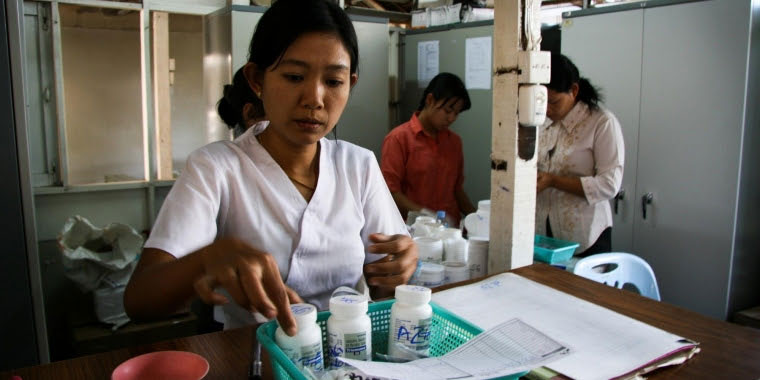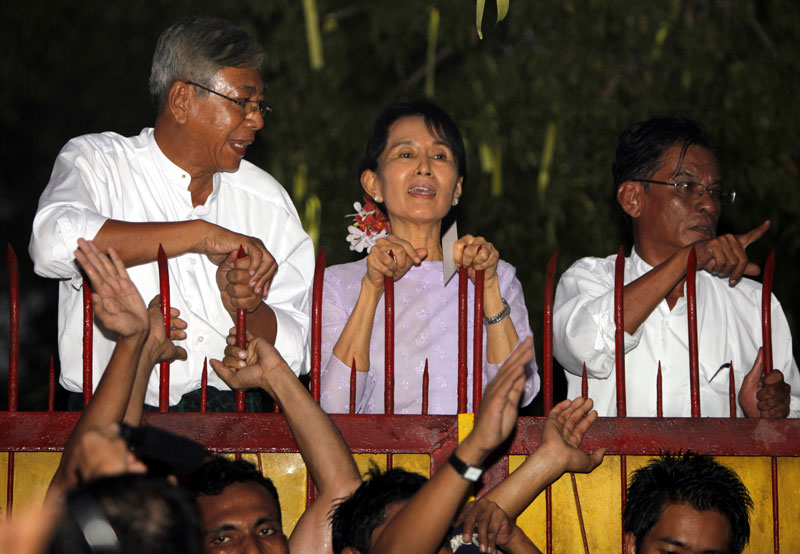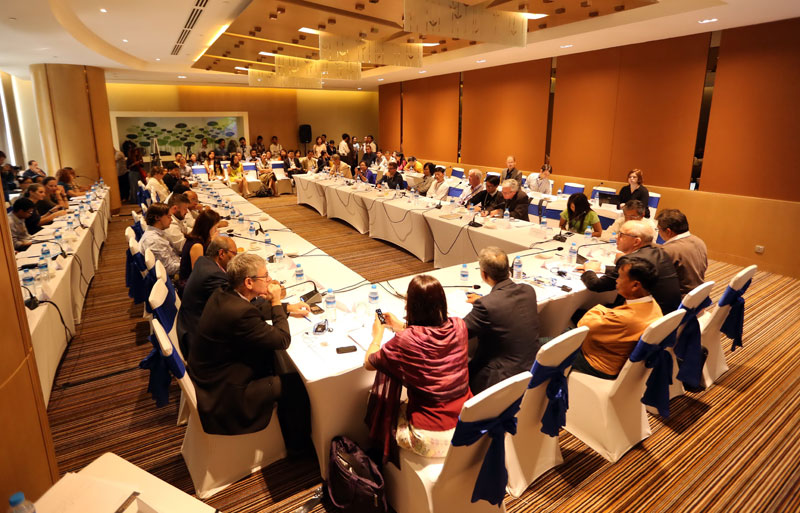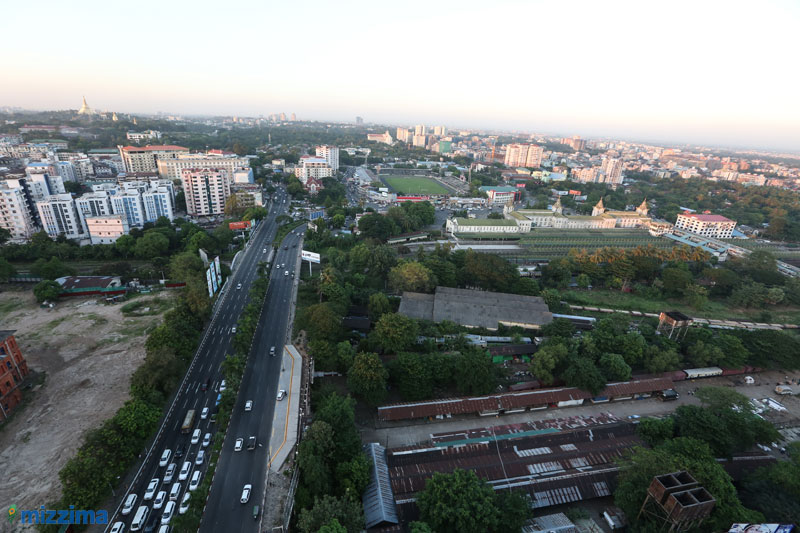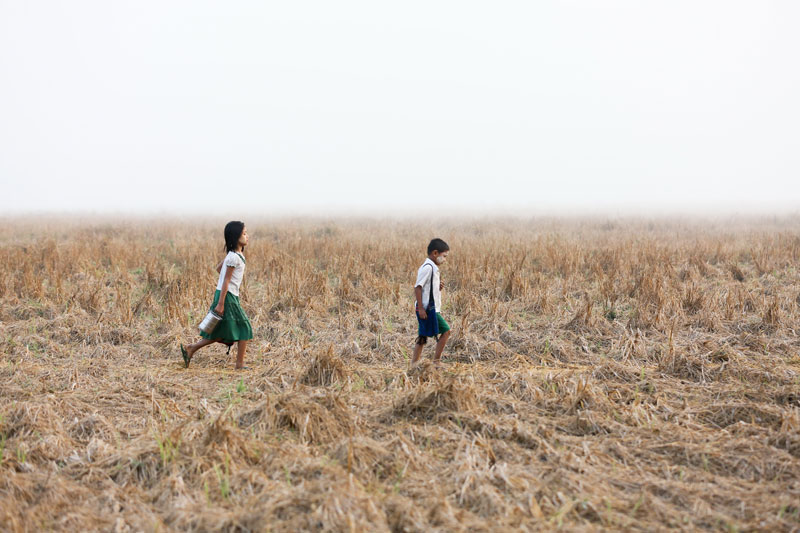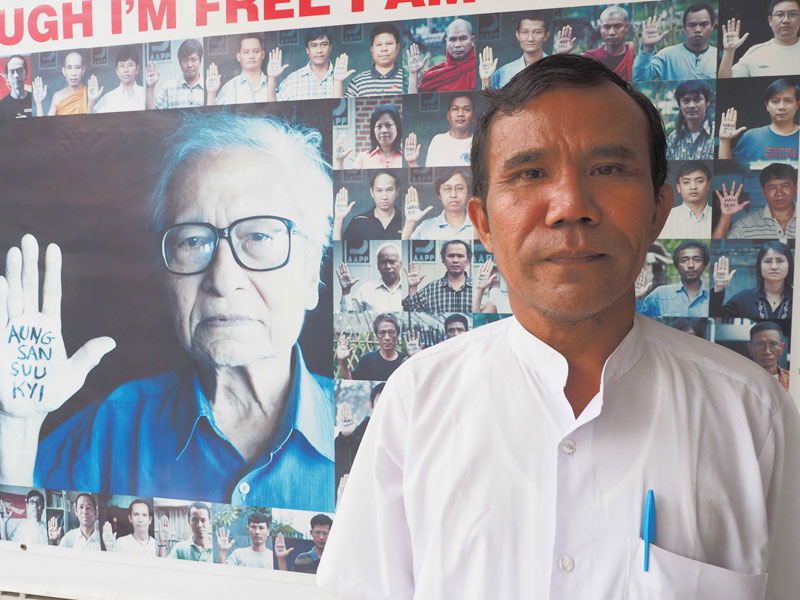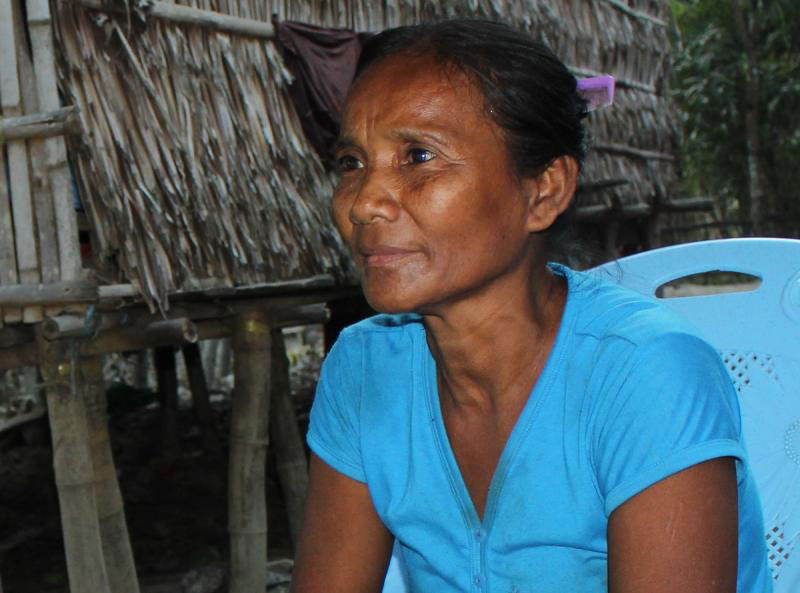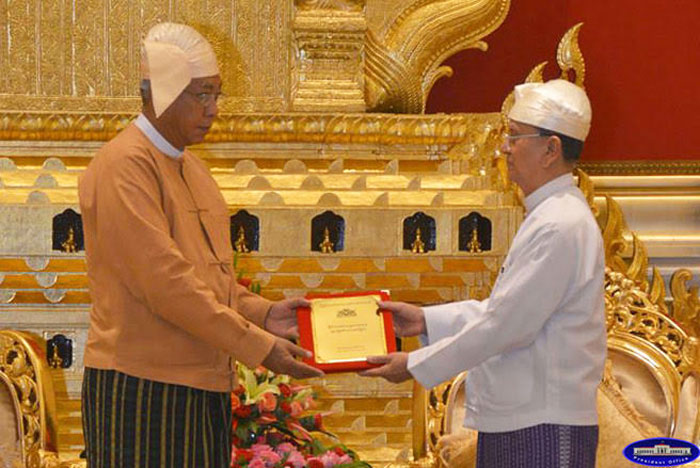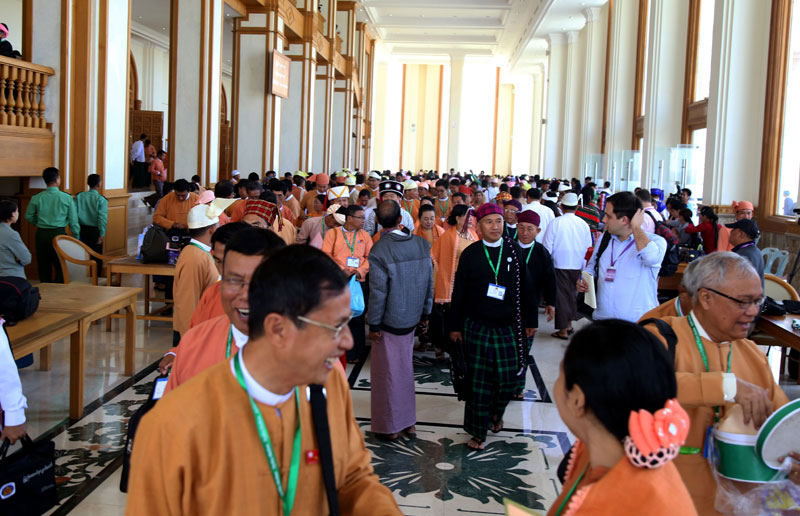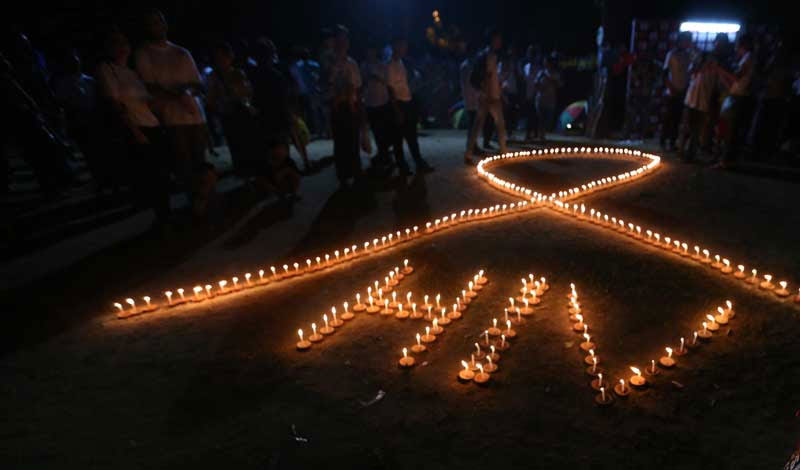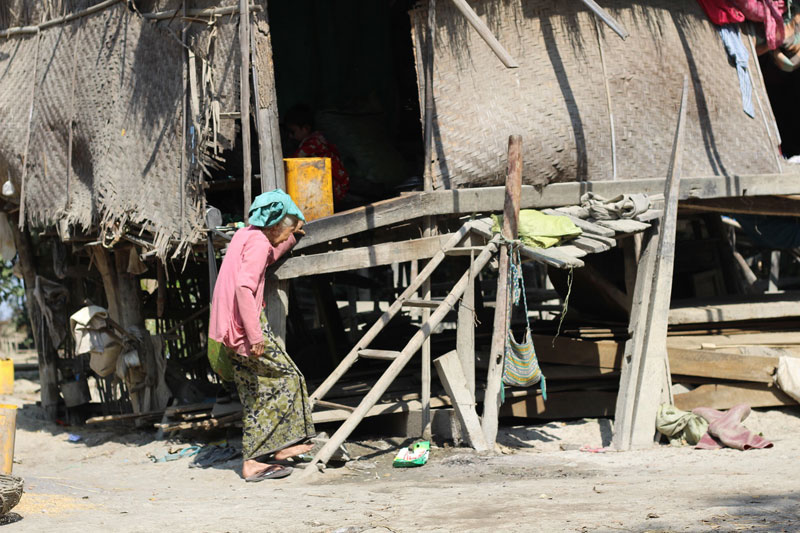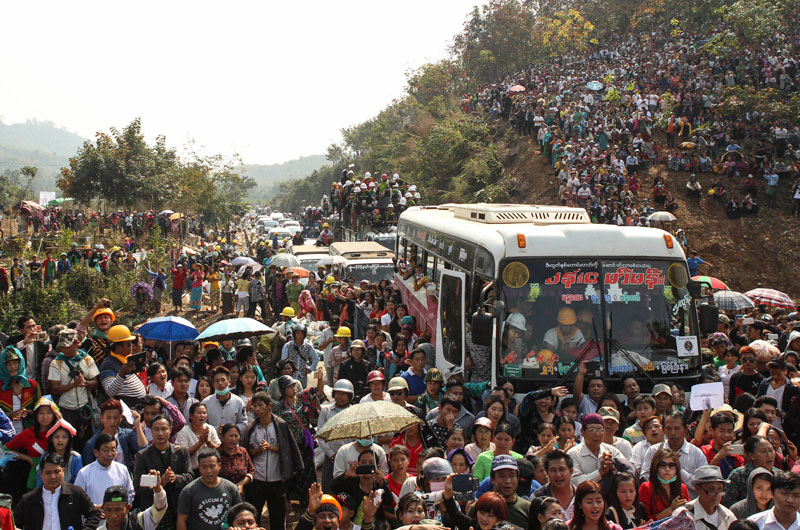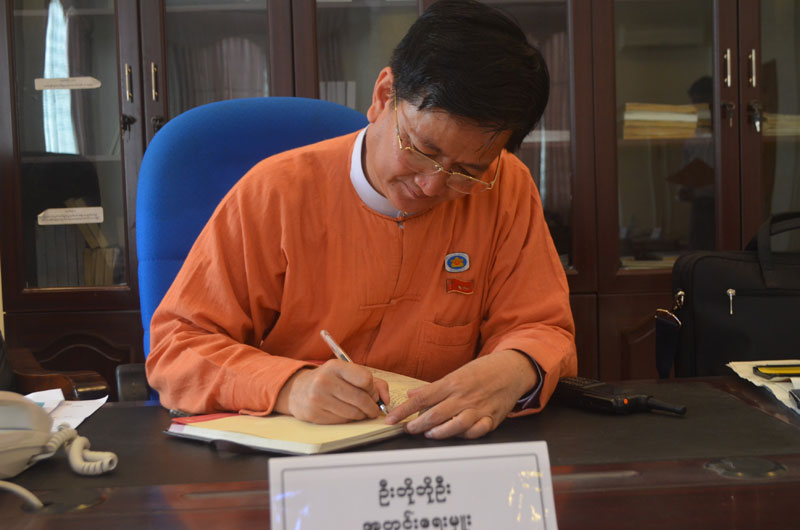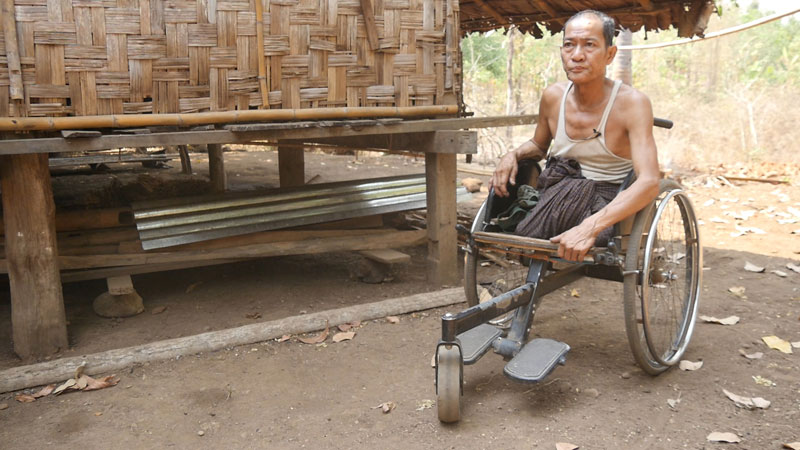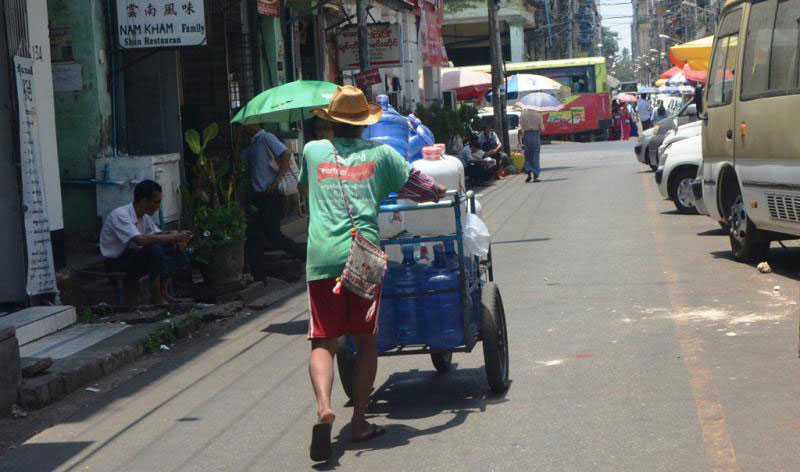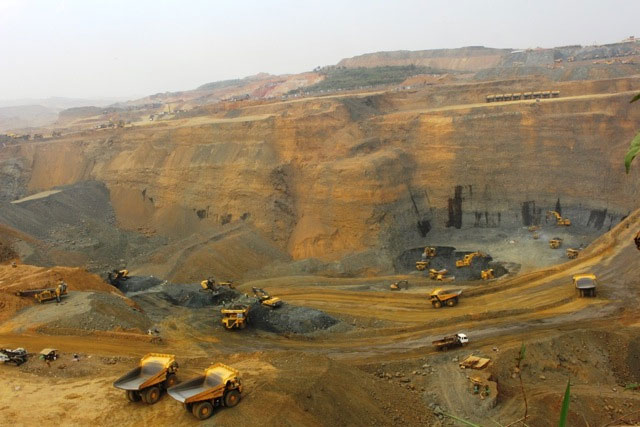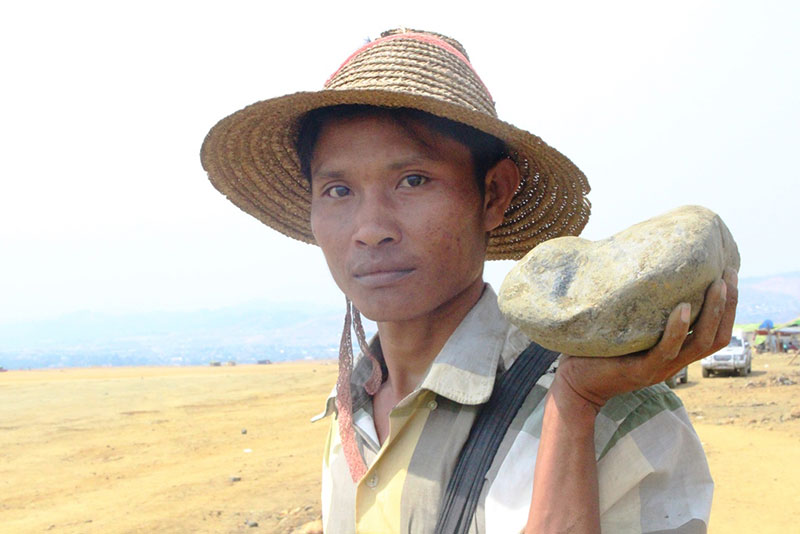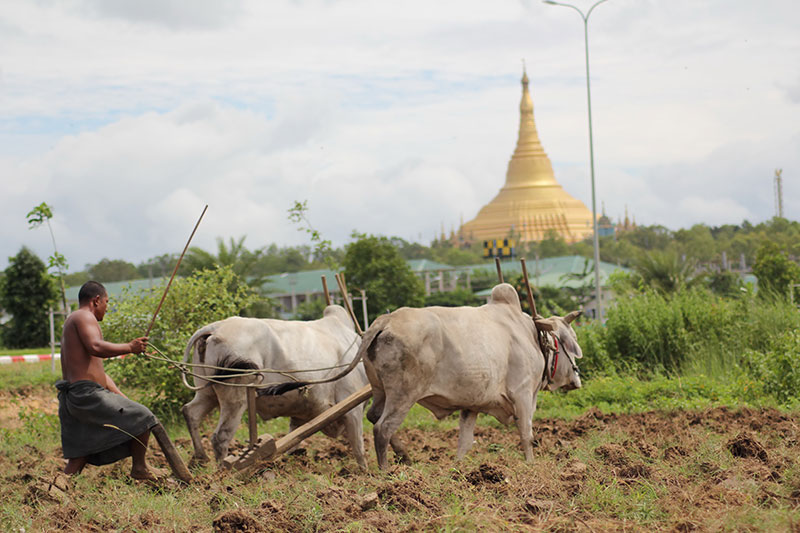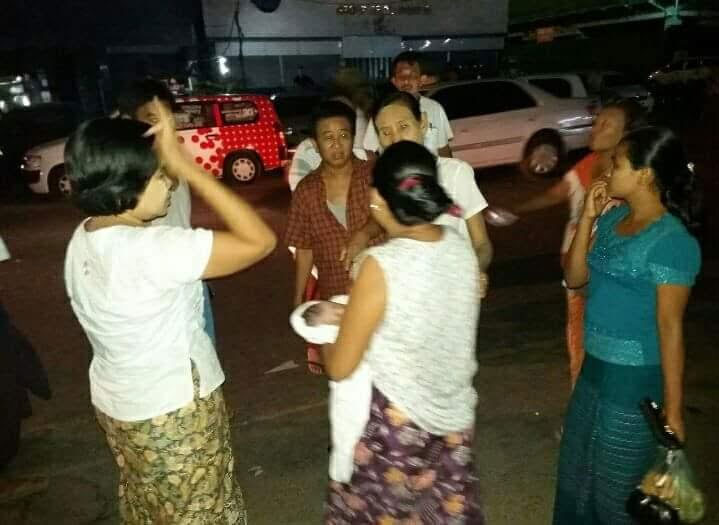Category:
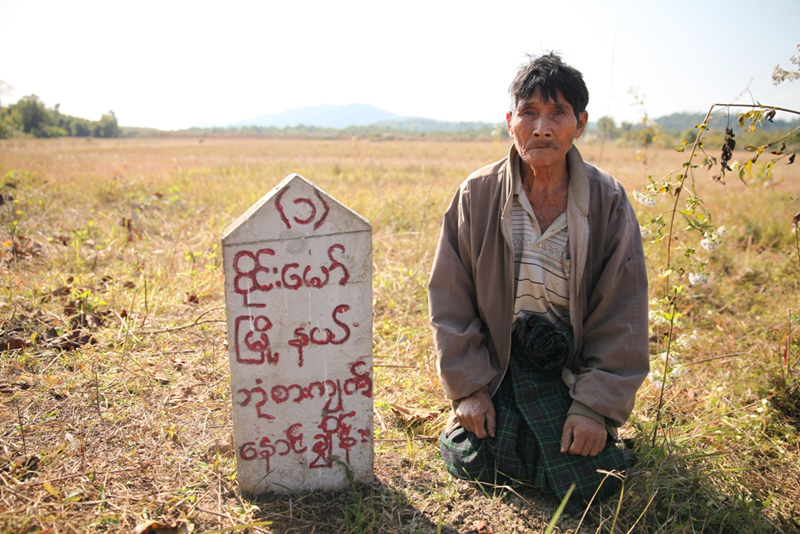
A Kachin farmer in Wai Maw township in Kachin State kneeling down on a plot of land confiscated from him by a company. (Photo: Thin Lei Win/Myanmar Now)
La Laung Daung Nan vividly remembers the last day of April 2015.
Alone in front of the two-acre plot of land her family had been allocated in a United Nations-led project, she waited for fellow villagers to turn up. They had been sent by officials and were coming to take down the barbed wire that protected her rubber saplings from the trampling of cows and buffalos.
“When they came, I pleaded with them not to do it, that we are from the same village,” she recalled, sitting on the bamboo floor of her stilt home with three other aggrieved farmers. Her words fell on deaf ears. The next day, roaming animals seeking pasture left few traces of the 11-month-old saplings.
Daung Nan, her husband and 16 others in Naung Chain, a dusty village a 40-minute motorbike ride away from the state capital Myitkyina, are in a legal tussle with village authorities over land they consider theirs, but which officials say is part of the 1,600 acres designated as grazing ground.
The villagers say they were not consulted about plans to turn their land into grazing grounds and believe it was a ploy by officials who planned to profit from renting out 300 acres to a Chinese company for a banana plantation.
Sa Yaw Haung Khaung, the village administrator, defended the land seizure in an interview with Myanmar Now, saying officials acted according to the law. He played down the impact on villagers, saying the Chinese concession covered only 70 acres for growing watermelons. It would have generated income for the whole village but it was abandoned following protests, he added.
On the other side of Myitkyina, in Shwe Aite village, more than a dozen people braved the cold to tell their stories of loss of farmland to this correspondent.
Many said the local administrators threatened them with lawsuits for refusing to move to accommodate “village expansion”. Others lost their farms to a new college building. Yet some blame the military, including a 65-year-old who was evicted to make way for a telecommunications tower which never materialised.
In December 2015, civil society group Land in Our Hands released a report after speaking to more than 2,500 people within 329 villages across six states and seven regions in Myanmar. Based on their findings, Kachin State has the second largest number of land confiscations after Shan State.
These local battles are an illustration of not only of land rights disputes engulfing Kachin, Myanmar’s northernmost state bordering China, but also of the whole country, a largely agrarian nation emerging from decades of brutal military rule where land rights are fragile and victims of injustice have little recourse.
RAMPANT LAND SEIZURES
“Land confiscations in Kachin have been so rampant there is little vacant land left. Villagers are too scared to speak up. There are more landless people now and many are struggling to survive,” Bawk Ja Lum Nyoi, a fiery political activist known for taking on powerful interests, told Myanmar Now.
In Kachin, the land disputes have been fuelled by the outgoing Thein Sein government’s liberalisation policies that have driven up land prices and attracted foreign and domestic investment, say analysts.
The renewed Kachin conflict has weakened communities’ rights and displaced more than 100,000 civilians, many of whom worry whether they will still be able to access their farmland when peace returns. They accuse the army of seizing swathes of land.
Meanwhile, junta-era issues such as a heavy military presence across the state, oppression of ethnic minorities and the unchecked exploitation of natural resources persist.
If land disputes remain unresolved they will be detrimental to the peace process and overall stability of Kachin State, activists say. Many are hoping the new government and parliament led by the National League for Democracy (NLD) will help the situation.
“We hope the NLD will be fair and come up with good solutions,” said Lahpai Zaw Tawng from Kachin State Farmers Network, who has been helping the Naung Chain villagers.
“Many farmers do not dare to demand the return of land confiscated by the military. We will have to see if we can push for that under the new government.”
LAND KEY TO PEACE AND DEMOCRACY
Changes in land ownership and use have emerged as one of the key issues during Myanmar's political and economic transition, with deep resentment and protests over land acquisitions - often dubbed "land grabs” - for infrastructure, development or large-scale agricultural projects.
Up to 70 percent of Myanmar's labour force is estimated to be directly or indirectly engaged in agriculture. The sector accounts for 44 percent of GDP, according to consulting firm McKinsey & Co.
All land in Myanmar is owned by the government but farmers are given land use or tillage rights, making land use a particularly sensitive issue for small-scale farmers who make up the majority of Myanmar’s population of 51 million.
Yet these rights are neither respected on the ground in practice, nor provide protection against land grabbing, activists said.
The 2015 Land in Our Hands report found 42.9 percent of respondents said they possessed legal documents issued by the government when their land was confiscated.
The issue is even more sensitive in ethnic areas. Ethnic minorities make up an estimated 30 to 40 percent of Myanmar’s population, and ethnic states occupy some 57 percent of the total land area.
Myanmar’s current land problem is “linked to ethnic conflict,” said the Netherlands-based Transnational Institute in its recent report on land issues in the country.
“Important questions around access to and control of land are at the heart of the civil war, and unless they are addressed well, real peace is likely to remain out of reach,” it said.
Bawk Ja, chairperson of National Democratic Force (NDF) in Kachin State who took the powerful Yuzana company to court over a land grabbing case and has been jailed for her political activities, agrees. “Without resolving the land issue, there’s no way you can achieve real peace,” she said.
RULED BY GUNS
Activists like BawkJa and Zaw Tawng are educating villagers of their rights so they are better able to stand up for themselves. It is a long process, however.
Shwe Aite villagers like ArrTi, 65, and Yaing Myaw, 45, remember shaking with fear during a meeting a few years ago when a senior military official came to their village.
“He put his pistol down on the table first before telling us we have to move. Then he asked, “Anyone want to say anything?”. I was so scared,” Yaing Myaw said.
But they’ve become emboldened in the past year or two. With help from Bawk Ja, they sent letters to central authorities about their cases, and defiantly returned to their homes and farms.
“I’m not giving in. It’s my land,” said ArrTi, who was asked in 2006 to leave her orchard, which she has owned since 1982. The army told her it was confiscated to build a telecommunications tower, but nothing has been built so far.
Land grabs have become so politically contentious that Myanmar’s military-backed parliament set up the Farmland Investigation Commission in 2012, tasked with scrutinising land grabs.
“In just under two years, the commission, has received more than 30,000 cases. Of these, only two-thirds have been heard, and in fewer than 1,000 – a mere 4 percent – has it ruled that compensation is justified,” wrote Namati, an international NGO working on land rights in an editorial.
Many are hoping that the new NLD-led government will keep the promises made in its election manifesto, which include fair resolution of disputes, establishing land tenure security and support for the landless.
It also says the party would “strive, in accordance with the law, to ensure the return to farmers of illegally-lost land, and payment of compensation and restitution” and “defend against illegal land confiscation practices”.
Dr.Khun Win Thaung is an NLD lawmaker in the Upper House representing Kachin State Constituency (11). The former veterinarian lost his government job in the 1988 protests and spent five years in jail. He said his job gave him a unique understanding of the struggles farmers face.
“Farmers are our benefactors and I’m aware of the suffering they have endured. We will try our best to resolve these land issues,” he told Myanmar Now.
Daung Nan and her husband, La Ban Khan Phan, have begun to prepare their land again, while keeping up the fight to save it from becoming a grazing ground. They plan to grow rice this time, in line with the authorities’ edict that slow-growing crops were not allowed within the grazing ground.
“If we haven’t made such a fuss, we would’ve lost all this land to the Chinese company,” said Khan Phan, his hands on the wooden stakes that once fenced off his land.
